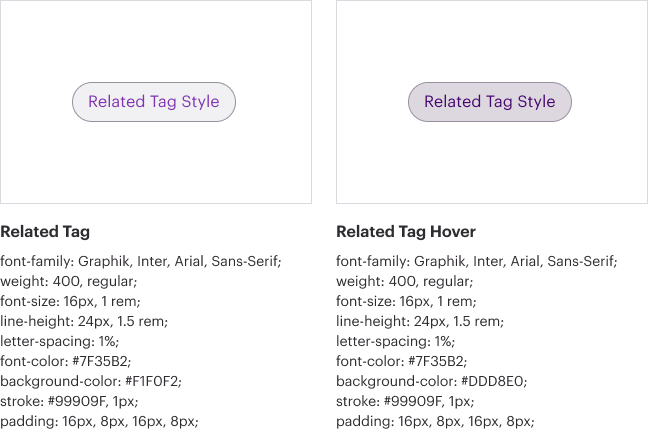Tags provide additional context to most types of content. Tags can help organize information by displaying categories tied to content pieces.
Tags provide additional context to any type of content (e.g. article pages) and can include topics, products, services, countries, etc.
Tags expand to fit the text. In related tags, when a user clicks on a tag, they are often taken to a page that lists other types of similar content.
